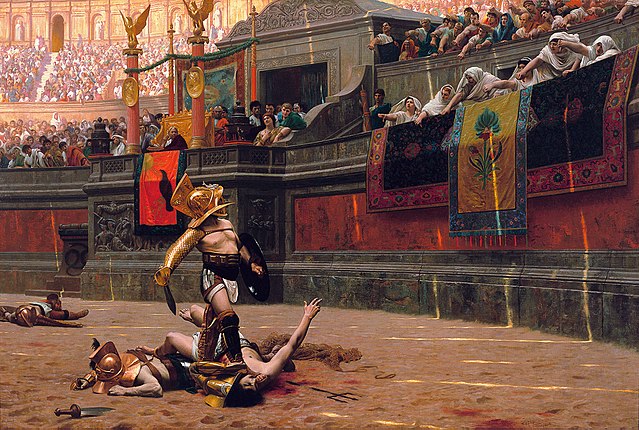Historical Martial Arts Techniques and Practices
Welcome to the captivating world of historical fighting styles, where we delve into the ancient techniques and practices that have laid the foundation for modern martial arts. As an experienced instructor, I am thrilled to take you on this journey through time, exploring the diverse range of fighting styles that have evolved over the centuries.
From ancient civilizations and renowned warriors to sacred traditions, let’s uncover the fascinating historical techniques that continue to inspire and shape the fighting arts of today.
Ancient Civilizations and their Martial Arts
Ancient civilizations were not only skilled in warfare but also developed unique fighting styles.
Ancient Chinese Martial Arts – Birth of the Shaolin Monks
The Shaolin Monks, known for their exceptional martial prowess, were influential in the development of ancient Chinese fighting styles. The Shaolin Temple served as a hub for martial arts training, and their techniques were deeply rooted in Buddhist principles.
They practiced various forms of Kung Fu, focusing on strength, flexibility, and combat efficiency. The legendary “Five Animal Styles” of Shaolin Kung Fu imitated the movements of the tiger, leopard, crane, snake, and dragon, making their techniques highly effective and deadly.
Indian Martial Arts – The Art of War and Self-Defense
India, with its rich history, contributed to the development of martial arts with techniques like Kalaripayattu, which focused on hand-to-hand combat, weaponry, and self-defense. This ancient martial art form integrated strikes, kicks, grappling, and healing techniques. Kalaripayattu practitioners emphasized flexibility, agility, and precise body movements, making it a comprehensive and practical fighting style.
Legendary Warriors and their Martial Traditions
Renowned warriors and legendary figures left lasting impressions on martial arts.
Samurai and the Way of the Sword
The Samurai of feudal Japan were skilled swordsmen, practicing martial arts like Kenjutsu and Iaido. Their code of bushido emphasized loyalty, honor, and self-discipline. Samurai training was rigorous, focusing on mastering the katana, the iconic Japanese sword. Their commitment to the way of the sword extended to moral and ethical principles, making their martial art not only a means of combat but also a path to self-improvement.
Gladiators – The Fighters of Ancient Rome
Gladiators were revered for their combat skills and participated in deadly contests in ancient Rome. Their training in various weapons and fighting techniques made them fearsome opponents. The gladiatorial games were both a form of entertainment and a display of military prowess. Different types of gladiators specialized in particular weapons, such as the retiarius with a trident and net, and the secutor with a sword and shield.
Sacred Traditions and Combat Rituals
Many cultures incorporated martial arts into sacred rituals and traditions.
Okinawan Martial Arts – The Birth of Karate
Okinawa, a Japanese island, played a crucial role in the development of Karate. Influenced by Chinese styles, Karate focused on striking, blocking, and powerful techniques. Practitioners honed their skills through rigorous training and kata, a series of choreographed movements. Karate’s emphasis on discipline and respect makes it not just a fighting style but also a way of life.
African Martial Arts – Dance and Combat
African tribes practiced a unique fighting style that combined dance, music, and combat. These traditions were not only for self-defense but also an expression of culture and identity. Capoeira, a Brazilian martial art with African roots, exemplifies the integration of dance and combat. It incorporates fluid movements and acrobatics, showcasing the creativity and resourcefulness of its practitioners.
Weapons and Warfare Techniques
Historical fighting styles often included mastery of various weapons and warfare techniques.
European Martial Arts – The Art of Fencing
In medieval Europe, knights and soldiers honed their fencing skills with swords, rapiers, and other weapons. Fencing became an essential part of European martial arts. The emphasis on precision, timing, and footwork in fencing techniques influenced other styles and modern Olympic sports.
Japanese Ninja – The Masters of Stealth
The Japanese Ninja, known for their espionage and assassination skills, practiced a specialized form of martial arts called Ninjutsu. Their stealthy techniques were designed for covert operations. Ninja training included mastering various weapons and specialized tools, such as shurikens (throwing stars) and kusarigama (chain-sickle).
Traditional Training Methods and Philosophies
Training methods and philosophies have been an integral part of historical fighting styles.
The Influence of Taoism in Chinese Martial Arts
Taoist philosophy, with its emphasis on balance and harmony, heavily influenced the development of Chinese martial arts like Tai Chi and Wing Chun. These arts focus on internal energy cultivation and the harmonization of body and mind.
Bushido – The Way of the Warrior
The samurai code of bushido, which encompassed virtues like courage, loyalty, and honor, shaped the martial traditions of Japan. Practitioners of Japanese martial arts still embrace bushido’s ethical principles and its emphasis on personal growth and discipline.
Conclusion:
The historical techniques and practices of fighting styles have left an indelible mark on the martial arts landscape. From the disciplined training of the Shaolin Monks to the strategic combat skills of the Samurai, each tradition offers valuable insights into the art of self-defense and personal growth. As we explore these ancient techniques, let us remember that the evolution of martial arts is a continuous journey of learning and refinement.
Whether you are interested in the graceful movements of Tai Chi or the powerful strikes of Karate, embracing the historical roots of fighting styles enhances our appreciation and understanding of these time-honored practices. Let us carry the wisdom of our martial ancestors into the future, preserving and evolving these treasured traditions for generations to come.

